As South Asian moms, many of us have different stories to tell on how we were socialized as young women and as children by parents who in the case of immigrants, struggled to give us a good life. As mothers to our own children today, we try to do what our parents did for us: give our daughters a strong sense of identity as women, wives or partners and a foundation for independence.
Some gender-based differences still exist in Western society and in India today. Rita Banerji, author and founder of ‘50 million Missing Campaign’, (an international campaign about India’s 50 Million Missing women), says she often challenged her parents on how she was raised and says mothers today need to create a space for their daughters to discover who they are, especially when raising strong daughters.
In her book, Sex and Power, she talks about gender-based inequalities in South Asian culture. Masalamommas had the chance to interview Banerji about her perspectives on being a South Asian woman and her advice on raising strong daughters.
Can you talk about how you challenged the socialization process of being raised in the South Asian culture?
Looking back on my life, I realize that for me personally, it wasn’t a decision at any one particular moment in time. I didn’t say, “I am going to challenge this culture that I have been raised in.” Rather, it is a series of choices I made, at each stage of my life, at different turning points. And it is only in retrospect that I realize, that what I was coming up against was a conflict between what family or culture was dictating, and what I needed to do.
For example, my parents really wanted me to study medicine, as many Indian parents want of their children! In India we take the medical entrance exams in high school and enter medical school soon after graduating from high school. So I did take science in high school as my parents wanted me to. And there were parts of it that I liked and parts of it that I hated. Fridays we dissected animals like frogs and mice. We’d have to first chloroform and kill live animals and then dissect them. The process was so repulsive to me, that when I went I’d take a long shower, and still feel I couldn’t wash the smell off me. I couldn’t eat anything all of Friday and Saturday.
It was awful! And I thought, I don’t really want to go medical school. I rather liked the idea of the liberal arts colleges in North America, because I felt I needed more time and exposure to other fields to really figure out what I deeply desired to make of my own life. My parents would dump these big, fat stacks of books to prepare for the medical entrance exams on me, which would lie unopened in a corner of my room, while I prepared for the SATs! It did upset them very much, and they nagged and hollered at me constantly, or put guilt trips on me.
Ultimately I did go to Mount Holyoke College in the U.S. and studied ecology, and later in graduate school, conservation biology, fields that I loved, and that deeply resonated with who I am and how I saw and interacted with the world.
I think most Indians come up against this kind of a conflicted choice for the most important decisions of their lives – education, job, life-partners and marriage. And they generally give in to the pressure and go with what their family wants them to choose. The question I asked, and answered with all the honesty I could muster up, is why did my parents want me to go to medical school? The unfortunate truth is that no Indian parent ever wants their children to go to medical school or choose a certain career because they think my child will help lots of people. For them their culture has set a few “prestige milestones” – and parents’ pressure their children to acquire these milestones on their behalf, so the parents can feel good about themselves, and feel like they have acquired status in their community and culture.
Often times it is because the parents themselves did the same for their parents. They stopped breathing and living for themselves, and allowed their parents to live through them. It is not right. You end up with people who live robotic lives, with the remote control in the hands of the family and culture. It does not create a community of healthy individuals, or for that matter a healthy community. And it is also clear to me now, that India’s ongoing femicide is a result of such inherently destructive dynamics that come of tradition bound communities. 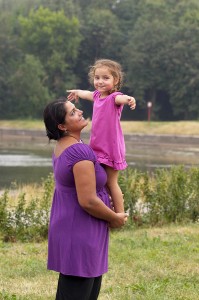
Do you have any advice or tips on how we can raise strong daughters?
Three things:
1. Create and provide the space for your daughter to discover and be the person she uniquely is. Teach her to feel comfortable in her own skin. To learn to choose aspects of the Indian and Canadian (western) cultures that appeal to her, and not feel an obligation to conform to aspects of either culture that personally don’t resonate with her. To not be afraid if she is different from the friends she has in both communities Indian and Canadian, and to seek people who will appreciate and accept her for who she is.
2. Teach your daughter how to deal with rejection and stand strong. We emphasize reaching for our dreams – which is important. But it is not always an easy path, and we rarely prepare our daughters to learn how to deal with rejection and to still persist.
3. Teach your daughter that abuse in any form is not o.k. from anyone, ever – not even from family. Walk away. Confront if it violates you and you have the means and strength for it. Never let anything negate you. I’d say the same applies to mothers. It is like what they tell you on the planes — that in the case of emergency put the oxygen mask on yourself first, before you assist your child.
What are some of the challenges South Asian moms face today when it comes to getting married, staying married, having children? 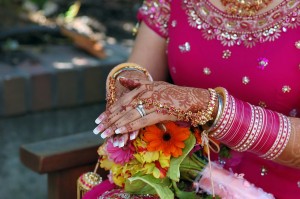
With getting married, I think the challenge for most South Asian women – still is, having their individual choice of partner acknowledged and respected. If a woman falls in love with a man outside her community, or religion or caste, she is often ostracized. It can be outright, or subtle, but is terribly isolating, and emotionally very difficult to live with. But it can also be a terrifying choice to make for many women for it can get you killed. These so-called ‘honor’ killings happen almost on a daily basis in India, and there have been cases in Canada too.
With staying married, I think the South Asian communities have more than enough fortifications to ensure that divorces don’t happen!! There is tremendous pressure, particularly on women, from their families and community, even when they are subjected to abuse and even extreme and dangerous violence, to not get out! They are pressured to remain in the marriage even when it is a threat to their safety and life. This is the biggest difference in the issue of domestic violence in Asian and Western communities. In western communities families and friends urge the women to get out.
There are thousands of women who get killed in India, often in dowry related domestic violence cases, and there’ve been cases in North America and the U.K. too. I think it is very, very important for South Asians to begin to make a distinction between adjustment and abuse – because of right now that distinction does not exist! Adjustment is when there may be a difference of personalities, habits, etc. between a husband and wife. Adjustment might also be, trying to adjust to the personalities of other people in your spouse’s family.
However, when a woman is subjected to verbal, emotional and/or physical abuse by her husband or/and her in-laws, that is not adjustment. That is abuse! And depending on the degree of abuse – these can also be criminal violations. It is extremely important for women of the Asian communities to draw a clean and clear line between these two things in their marriages. When he likes curry and she likes pizza, that’s an adjustment issue. An adjustment is something that you can discuss and live with. But if he or his family, calls you derogatory names, puts you down constantly, blames you for everything, controls your choices and jobs, hits you in any way, threatens you, etc. that is not adjustment. That is abuse. No woman should ever have to tolerate abuse, live with it, accept explanations for it, or die because of it!
What inspired you to start The 50 Million Missing Campaign?
The fact that women as a group are being targeted and selectively eliminated, in what is probably the worst genocide in human history. More than 50 million women eliminated from the Indian population in three generations! There is no human group in the history of the world that has been subjected to this kind of hatred and annihilated on such a massive scale. Think about it – India technically houses 1/5 of the world’s women. And in 20 years, 20% of women in India will have been systematically eliminated. If this was true of any other human group on the basis of race, or religion, or ethnicity – think of how outraged the world would be!
For me the question is, why doesn’t the targeted elimination of a group based on gender evoke the same response? Is it because this group is women, and the functioning of the global mind is still fundamentally misogynistic? Because, if it was the other way around – say, a nation did not want men. So they were eliminating millions of men every year – through sex selected abortion, male infanticide, deliberate starvation and violence inflicted on little boys, and killing newly married grooms in the thousands – what do you suppose the response of the world would have been?
The 50 Million Missing Campaign is something I would have done even if I was not Indian, or a woman. It is because I am human, and as a member of the human community I am outraged! 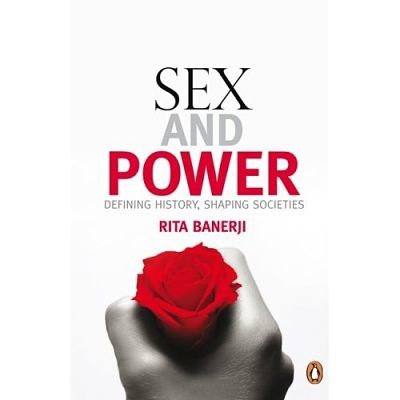 Your book Sex and Power looks at gender based inequities in the South Asian culture. What differences have you seen in the way it’s been received in India vs. North America?
Your book Sex and Power looks at gender based inequities in the South Asian culture. What differences have you seen in the way it’s been received in India vs. North America?
There are some parallels that to me as a writer are very interesting. The book really looks at how the social perception of sex and sexual morality changed from one period to another in India. And how this perception effects the position and power of each gender in society in that particular period. What to me is interesting, is that if men review or discuss the book, they are usually focused on the aspects of sex and sexuality and seem to actually avoid the gender hierarchy issue that results from it. Whereas women, seem to shy away from or seem embarrassed to address the sex and sexuality issues, and focus only on the gender hierarchy. Another response that I’ve encountered from readers both in India and the West, is surprise at many of the things discussed in the book. Our treatment of history in India, be it in school books, or oral history, is very selective and highly censored particularly in context of sex and sexuality.
So most young people in India have grown up, sort of partially blind, to their own history and sociology. At my book launch in India, a number of college students came up to me and expressed complete disbelief at some of the things I discussed. For example, the Shiv-Lingam and Yoni, the idol which almost all Hindu households worship, is a leitmotif in my book, and represents the union of the penis and vulva. I ask the question how and why the religion came to worship such a blatantly sexual symbol. So I asked the young people at my book launch what the Hindi words for penis and vulva are, and not one of them knew. See, they may know the smutty words, which they won’t dare say aloud. But they do not know that actual anatomical words! And they are Lingam and Yoni!
A female professor in the audience who spoke to me later, told me that it was not unusual, and that she herself did not know of the words till after she was married in her late 20s. It is incredible – this social conspiracy that conceals the most fundamental words of our own bodies because they deal with sex!  But it also heartens me because especially in younger Indians, I still see a curiosity and openness to know, to ask, to discuss. Some of them have said, that there is so much in their own family and lives they’ve felt frustrated with, that makes sense to them after they read my book, because they see where it is coming from.
But it also heartens me because especially in younger Indians, I still see a curiosity and openness to know, to ask, to discuss. Some of them have said, that there is so much in their own family and lives they’ve felt frustrated with, that makes sense to them after they read my book, because they see where it is coming from.
Also, I find, unlike Indian women of older generations, younger women, seem more willing to recognize the gender hierarchy in India, even though I still do not find there to be a momentum enough for wanting to change it. There is still a fear and timidity there.
Gender based discrimination is still rampant in India but has also crossed over to North America, why is this still a problem? What can mothers do to reverse this in any way? It is true that these practices are evident even among expatriate Indian communities in North America and the U.K. And like the U.S., in Canada too the sex-ratios of Indian communities are abnormally skewed against girls.
In the case of dowry related violence – I always tell women to treat the first demand for money or “gifts” before or after the marriage as a sign of extreme danger, and to get out immediately. There are too many women who have been killed, or have been forced to live in marriages subject to criminal forms of violence. It is unconscionable and inhuman that families force their daughters to continue in marriages like this!! There are more options in countries outside India, and there are support groups and shelters.
So if South Asian Canadian women don’t get support from their own families, they should look to other networks of women, and they don’t have to be South Asian, in their area and reach out for help. North American women’s groups have been very active and effective in addressing domestic violence, and South Asian women who need help should reach out to these groups. I would give the same advice to women who are under pressure to get and ultra-sound and abort their female fetuses. Because that is exactly how it happens.
Most women come under extreme pressure from their husbands and in-laws to rid female fetuses, and if they don’t they face harassment, and emotional or even physical abuse. The abuse accelerates if they give birth to a daughter, so many have the abortion to avoid that. Ultimately abortion is about a woman’s choice and prerogative over her own body. And this does exactly the opposite to her. It forces her to disassociate from her own body in the most violent way. The psychological and emotional damage it does to her, will effect her outlook on life. 
How are young South Asian mothers different today than compared to our mother’s generation, do they still have the same resources to help them parent?
I know it is conventional to say it is more difficult now, because in the older generations, women generally were housewives and they didn’t have to juggle the family and career etc., or that they lived in large, joint families and got help taking care of the children etc. But in my opinion I think South Asian women today are better off. I’d rather be a woman today, than be a woman in my mother’s and grandmother’s time any day! think we have more choices today of what we want to do and not do, of when we want to do it, and how – which allows us to have a much better sense of self, and control over our life and its direction and momentum, than earlier generations did.
You have the choice of making your life as complicated or as simple, as you want to. How many children you want, when you want them? You want your career to reach a certain place and then have children you can do that. The important thing is that as women we have to recognize that we have that freedom and choice, claim it, and exercise it purposefully. But Indian women before our generation, did not have that choice – in fact many today in India still don’t. They have to submit their body, mind and soul to the design and demands of a culture and family – and try their best to stay afloat.
Visit for more info on Banerji’s book: www.sexandpower.info 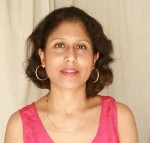 About Rita Banerji Rita is an author, free-lance writer and photographer and a gender activist from India. Her Sex and Power: Defining History, Shaping Societies was released by Penguin Global in 2009. She is also the founder and chief administrator of The 50 Million Missing Campaignwhich works to raise awareness about and fight female genocide in India. Her writings and photography have been published in magazines and newspapers in the USA, U.K., India, Nepal, Hong Kong and Australia. The publications include The London Magazine, New Orleans Review, and India Today.
About Rita Banerji Rita is an author, free-lance writer and photographer and a gender activist from India. Her Sex and Power: Defining History, Shaping Societies was released by Penguin Global in 2009. She is also the founder and chief administrator of The 50 Million Missing Campaignwhich works to raise awareness about and fight female genocide in India. Her writings and photography have been published in magazines and newspapers in the USA, U.K., India, Nepal, Hong Kong and Australia. The publications include The London Magazine, New Orleans Review, and India Today.
Rita was born and raised in India, and then lived in the U.S.A. for 11 years. She attended Mount Holyoke College and George Washington University there. Her fields of study were Ecology, Conservation Biology, and Cultural Anthropology, and she worked largely in the environmental field. Many of her projects also had a gender perspective. She has worked with the Chipko women’s movement in India (under the supervision of Dr. Vandana Shiva), and with the Institute for Policy Studies and The World Resources Institute in Washington D.C. You can reach her at: www.ritabanerji.com The 50 Million Missing Campaign www.50millionmissing.info
©masalamommas and masalamommas.com, 2016-2017. Unauthorized use and/or duplication of this material without express and written permission from this site’s author and/or owner is strictly prohibited. Links may be used, provided that full and clear credit is given to masalamommas.com and Masalamommas online magazine with appropriate and specific direction to the original content.


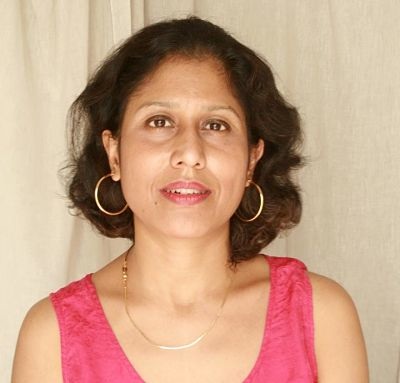
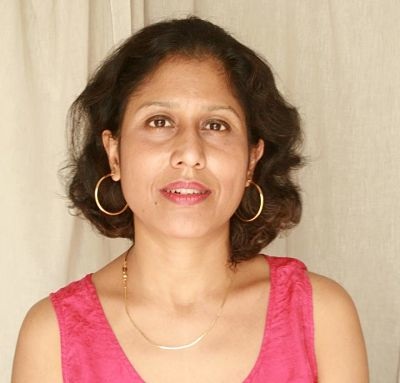

[…] interviewed The 50 Million Missing Campaign Founder, Rita Banerji. To read the full interview: Click Here. Below are some excerpts from the interview. [On raising strong daughters]: We emphasize reaching […]